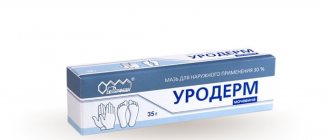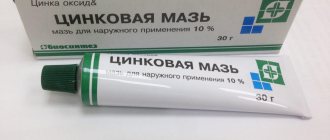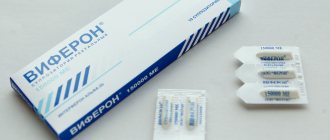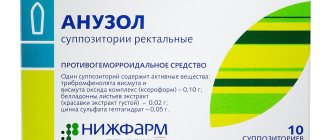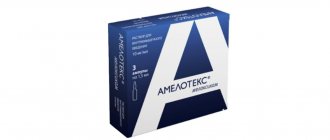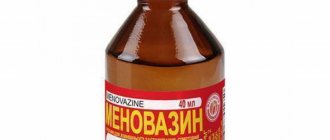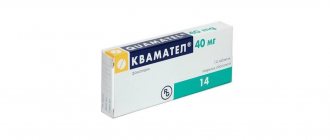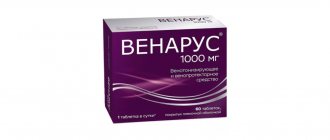Zinc ointment is one of the best remedies in the fight against diaper rash, excessive sweating and acne. It provides the necessary skin care, disinfecting and protecting from external adverse factors. The low price makes it accessible to consumers, and the low percentage of allergic reactions gives it the right to be called safe for babies.
pharmachologic effect
Anti-inflammatory agent for external use, has an antiseptic, astringent and drying effect.
When used in children, it helps prevent diaper rash, protects against urine and other irritants, and softens irritated skin.
Reduces exudation and wetting, which relieves local inflammation and irritation.
The symptomatic and protective effect of the drug is determined by zinc oxide. Zinc oxide, combined with petroleum jelly, creates a physical barrier, forming a protective coating on the skin that reduces the impact of irritants on the affected area and prevents rashes.
How to use zinc ointment
Zinc ointment is used in pediatrics as a protective agent against diaper rash. In addition, it is recommended to lubricate the baby's delicate skin under the diaper every time after bathing. Zinc creates a reliable barrier that protects children's skin from constant contact with urine and loose stool. By applying zinc ointment to the buttocks daily, you can protect your baby from diaper dermatitis.
The disinfecting effect of the drug is used when treating wounds. By applying the composition to abrasions, you can avoid infection, prevent acidification of the damaged surface, and speed up the process of skin regeneration.
The main indications are:
- diaper rash;
- scratches;
- dermatitis;
- eczema;
- cuts.
In addition, zinc ointment is used to care for the elderly and immobile patients. Treatment of bedsores slows down their spread and disinfects, which eliminates the risk of secondary infections.
Directions for use and doses
For external use only.
Diaper rash in infants.
Treatment: Wash and dry the affected area before use. When the first signs of redness, diaper rash or slight irritation of the skin appear, the ointment is applied 3 or more times a day, as necessary, usually with any diaper change.
Prevention: applied to the skin covered with a diaper or diapers before signs of irritation begin, especially before bedtime, when the child can be in wet diapers for a long time.
Cuts, scrapes and burns
Apply a thin layer, apply a gauze bandage if necessary.
Apply only to superficial and uninfected lesions.
Photocontact dermatitis
The ointment is applied in a thin layer to the affected areas of the skin 1-3 times a day.
How does zinc ointment work on acne?
Use in cosmetology has shown its effectiveness against acne. Skin rashes caused by excessive secretion from the sebaceous glands may disappear if zinc ointment is used correctly:
- Cleanse skin of makeup and impurities.
- Wipe skin dry.
- Apply zinc ointment to the area affected by acne.
- Leave overnight.
Zinc will dry out areas of the skin and prevent the sebaceous glands from producing sebum.
Do I need to wash off zinc ointment from my face?
The constant presence of zinc on the skin of the face can lead to dryness and flaking. However, this depends on the individual characteristics of the sebaceous glands. If pathological activity is noted, the zinc ointment may not be washed off, but in this case there is no need to apply foundation and other cosmetics on top of it: firstly, this will clog the pores, and secondly, the compositions of some products may react with zinc, which may lead to chemical reactions between components.
If the ointment is not washed off during the day, be sure to cleanse the skin by washing before the next application. Otherwise, the accumulation of daytime dust in the pores with ointment residues can give rise to a new skin problem.
How to store the drug according to the instructions
- The shelf life of zinc ointment is 5 years . After this time, the drug cannot be used, as the effectiveness of the drug decreases several times and the likelihood of side effects increases.
- Temperature . The most optimal value for storing the drug is a temperature not exceeding +25 °C. You can store it in a separate refrigerator door. But under no circumstances should you freeze it. In addition, a negative effect of temperature changes on the stability of the dosage form was noted. For example, with a sharp increase in temperature, the liquid component of the medicine may “sweat out”. And if the storage temperature drops sharply, the consistency of the ointment will not be suitable for application to the skin.
- The storage area must be dry . So it is best to use special cabinets for storing medicine that are not subject to periodic increases in humidity.
- Light . The drug is not recommended to be stored in a room exposed to natural or artificial light. This is due to the fact that its composition can sharply deteriorate under the influence of influences unfavorable for zinc ointment. Therefore, it is important to place it in a closed and darkened room.
- Storage together with other medicines . Zinc ointment can be stored next to other drugs, but it must be hermetically sealed with a lid.
- Transfer to other containers . If the ointment is in a dark glass jar, then for ease of use it can be transferred to other containers, which should also be covered with a lid. However, moving the medicine is prohibited if the medicine is packaged in a sealed tube.
How to use zinc ointment for sweat
Excessive sweating is a problem that zinc ointment helps combat. Violation of the function of thermoregulation leads to excessive production of sweat by the glands, due to which the body tries to reduce body temperature. Zinc ointment does not affect the center of thermoregulation, however, it can reduce the activity of the sweat glands, thereby reducing the amount of sweat produced.
It should be noted that the sweat produced by humans is odorless. The waste products of bacteria that multiply in the armpits, which contain a favorable environment for the proliferation of microorganisms, smell. Zinc ointment, having an antiseptic effect, reduces the rate of bacterial growth, thereby eliminating unpleasant odors.
Composition of the drug
The drug contains one active ingredient mixed with an ointment base.
Active Ingredient
The active substance in pharmacology is called “zinc oxide” (Zinci oxydum). The inorganic compound with the formula ZnO appears as a white or slightly yellowish powder. The substance is part of zinc ointment, analogues in the form of paste and cream. The active component is practically insoluble in water and alcohol.
Every 100 gr. zinc ointment contain 10 g. zinc oxide. Ointment base of domestic preparations - 90 g. medical Vaseline. When mixing the components, a thick, ointment-like white substance is obtained.
Ointment base
Vaseline is a dermatoprotective agent that softens and protects the skin. The substance has gained “notoriety” among cosmetologists in recent years. Vaseline is considered a comedogen due to its ability to create an impenetrable film on the skin.
The ointment base is poorly absorbed and difficult to wash off with water. A greasy substance with mineral oil and paraffin leaves an oily sheen on the skin and stains laundry.
Manufacturers of dermatological preparations and cosmetic products often use less water-repellent and more expensive ingredients.
Anna Margolina, candidate of biological sciences, author of books on cosmetology, noted in one of her articles that it is too early to give up Vaseline. The substance provides the protective properties of zinc oxide and reduces the cost of drug production.
Prices for domestic zinc ointment in jars and tubes of 25 and 30 g. are 35-57 rubles. Imported preparations contain 10-20% of the active substance. The cost of foreign analogues is 10 times higher.
Analogs
Foreign manufacturers of zinc ointment use other auxiliary ingredients: lanolin (“wool wax” obtained by processing sheep’s wool), beeswax, a synthetic analogue of vitamin E, cetyl stearyl alcohol, white petroleum jelly (preferably purified). Therefore, imported drugs are more like creams and are absorbed faster.
It is useful to know the difference between zinc ointment and zinc paste in order to use each product correctly. Zinc paste is often called ointment in everyday life. The drug contains 25 g. zinc oxide and 75 gr. excipients. For 1 part ZnO there are 2 parts medical petroleum jelly and 1 part starch. Paste is a more concentrated product.
Salicylic-zinc ointment contains two active substances - salicylic acid and zinc oxide. The drug has antiseptic, anti-inflammatory and keratolytic properties. The product is used to treat eczema and hyperhidrosis.
Sulfur-zinc ointment is a drug used in the complex treatment of seborrhea and psoriasis. The active substances have antiseptic, local irritant, keratolytic, astringent and exfoliating effects.
Other analogues of zinc ointment are Desitin, Tsindol.
Application in cosmetology
Zinc ointment for the face is a remedy that protects against the premature appearance of wrinkles, pigmentation and sunburn. With regular application, the appearance of the skin improves and it becomes healthier.
In cosmetology, zinc ointment is used as a moderate disinfectant, astringent, and anti-inflammatory agent. The drug eliminates skin irritation caused by the activity of bacteria and their toxins.
For acne
Zinc ointment for acne helps only as part of complex therapy. The product does not get rid of the main cause of acne - bacteria that multiply in the ducts of the sebaceous hair follicles. Zinc ions are part of compounds that regulate the activity of the sebaceous glands.
A drug for treating acne must contain at least 20% zinc oxide. A more concentrated zinc paste is preferable to the 10% ointment.
After acne heals, red or brown post-inflammatory spots remain. The anti-acne remedy is used in the same way as for acne.
Apply a pinhead-sized lump of product directly to a previously cleansed area of skin and rub in gently. Use for several days while inflammation and redness persist.
Recommendations:
- To clean the problem area before applying the ointment, use a chlorhexidine solution or antibacterial lotion.
- If there is one small pimple, then makeup is applied on top of a thin layer of ointment.
- After a few hours, the skin is cleaned with a cotton pad moistened with warm water, and a layer of ointment is applied again.
- You can leave the product on your face at night and wash it in the morning.
Often, bruising remains after squeezing pimples. Such injuries are also treated with zinc ointment.
It is better not to squeeze, because infected sebum spreads from the area of the pimple into the surrounding tissue.
Zinc ointment for bruises is applied directly to the affected area. The drug accelerates resorption and supports natural skin regeneration.
For wrinkles and age spots
The product is used as an anti-aging agent. The rejuvenation effect is due to the fact that zinc is a regulator of collagen synthesis, which gives strength to the skin. Ions of this metal enhance metabolism in the dermis, are needed for protection from ultraviolet radiation, and allow you to resist the aging process longer.
Zinc ointment for wrinkles:
- maintains the necessary level of moisture in the skin;
- prevents disruption of collagen synthesis;
- acts as an anti-inflammatory agent;
- helps in the adsorption of microbes and toxins.
Excessive pigmentation of the facial skin is caused by hormonal imbalance and age-related changes.
Zinc ointment for age spots reduces the harmful effects of various processes on the epidermis. Thanks to regular use of the product, darkened areas of the skin lighten.
Apply the drug in the evening. Add an equal amount of lanolin or spermaceti cream. If desired, dilute with a small amount of olive oil.
Contraindications
The ointment is not used to treat skin diseases in patients prone to allergic reactions to the components of the drug.
Zinc ointment is not applied to the mucous membranes of the mouth. Once zinc enters the bloodstream through the esophagus, it can cause poisoning, which can lead to convulsions, allergic skin reactions, nausea, vomiting and dizziness. Exceptions may be the mucous membranes of the anal ring and foreskin, where the ointment can be applied to relieve the inflammatory process, accelerate the healing of cracks and disinfect the surface.
